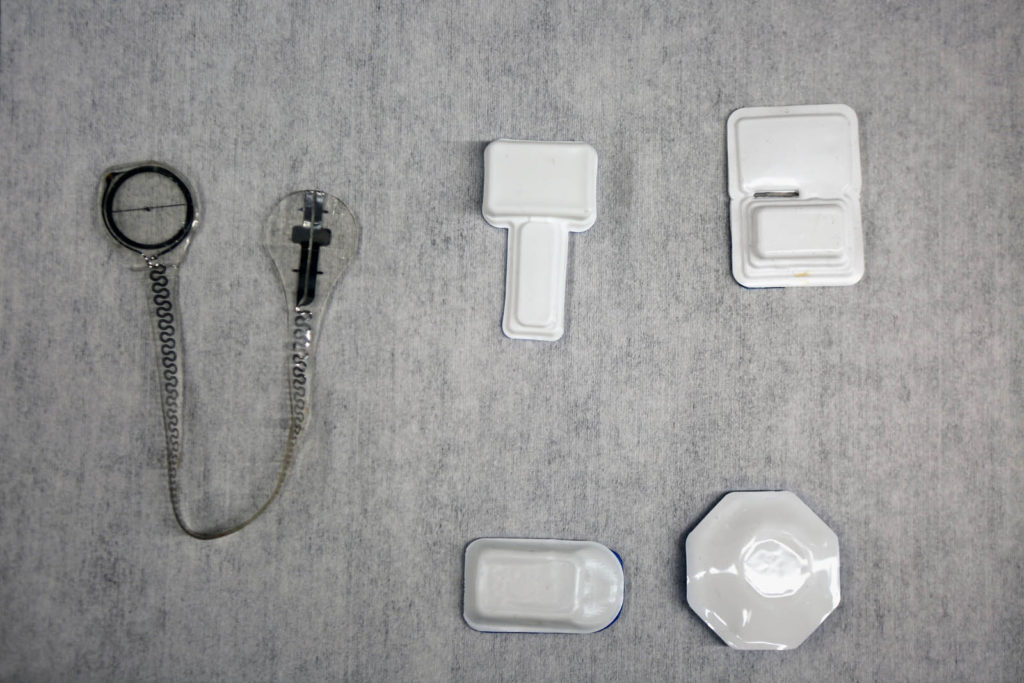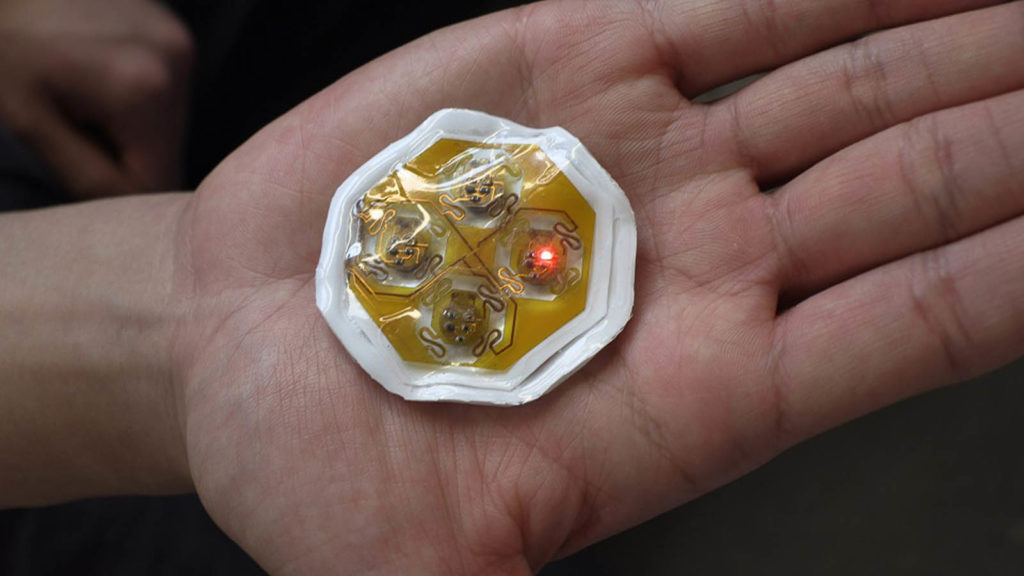
Just one year ago, Northwestern University scientists introduced the first-ever transient pacemaker—a fully implantable, wireless device that harmlessly dissolves in the body after it’s no longer needed. Now, they have unveiled a new, smart version that is integrated into a coordinated network of four soft, flexible, wireless, wearable sensors and control units placed around the upper body.
The sensors communicate with each other to continuously monitor the body’s various physiological functions, including body temperature, oxygen levels, respiration, muscle tone, physical activity and the heart’s electrical activity. The system then uses algorithms to analyze this combined activity in order to autonomously detect abnormal cardiac rhythms and decide when to pace the heart and at what rate. All this information is streamed to a smartphone or tablet, so physicians can remotely monitor their patients.
The new transient pacemaker and sensor/control network can be used in patients who need temporary pacing after cardiac surgery or are waiting for a permanent pacemaker. The pacemaker wirelessly harvests energy from a node within the network—a small wireless device that softly adheres to the patient’s chest. This technology eliminates the need for external hardware, including wires (or leads).
To enable the system to communicate with the patient, the investigators incorporated a small, wearable haptic-feedback device that can be worn anywhere on the body. When the sensors detect an issue (such as low battery power, incorrect device placement or pacemaker malfunction), the haptic device vibrates in specific patterns that alert wearers and inform them of the problem.

“In current settings, temporary pacemakers require a wire that is connected to an external generator that stimulates the heart,” Igor R. Efimov, Ph.D., professor at the McCormick School of Engineering said. “When the heart regains its ability to stimulate itself appropriately, the wire has to be pulled out. As you might imagine, this is a pretty dramatic procedure to pull out a wire connected to the heart. We decided to approach this problem from a different angle. We created a pacemaker that simply dissolves and does not need to be removed. This avoids the dangerous step of pulling out the wire.”
“Current pacemakers are quite intelligent and respond well to the changing needs of the patients,” Rishi Arora, M.D., professor of medicine in the Division of Cardiology, said. “But the wearable modules do everything traditional pacemakers do and more. A patient basically wears a little patch on their chest and gets real-time feedback to control the pacemaker. Not only is the pacemaker itself bioresorbable, it’s controlled by a soft, wearable patch that allows the pacemaker to respond to the usual activities of life without needing implantable sensors.”
The work was led by Northwestern’s John Rogers, Ph.D., the Louis Simpson and Kimberly Querrey Professor of Materials Science and Engineering, Biomedical Engineering; Prof. Arora and Prof. Efimov. Their study was published in the journal Science.
 TEXTILES.ORG
TEXTILES.ORG


